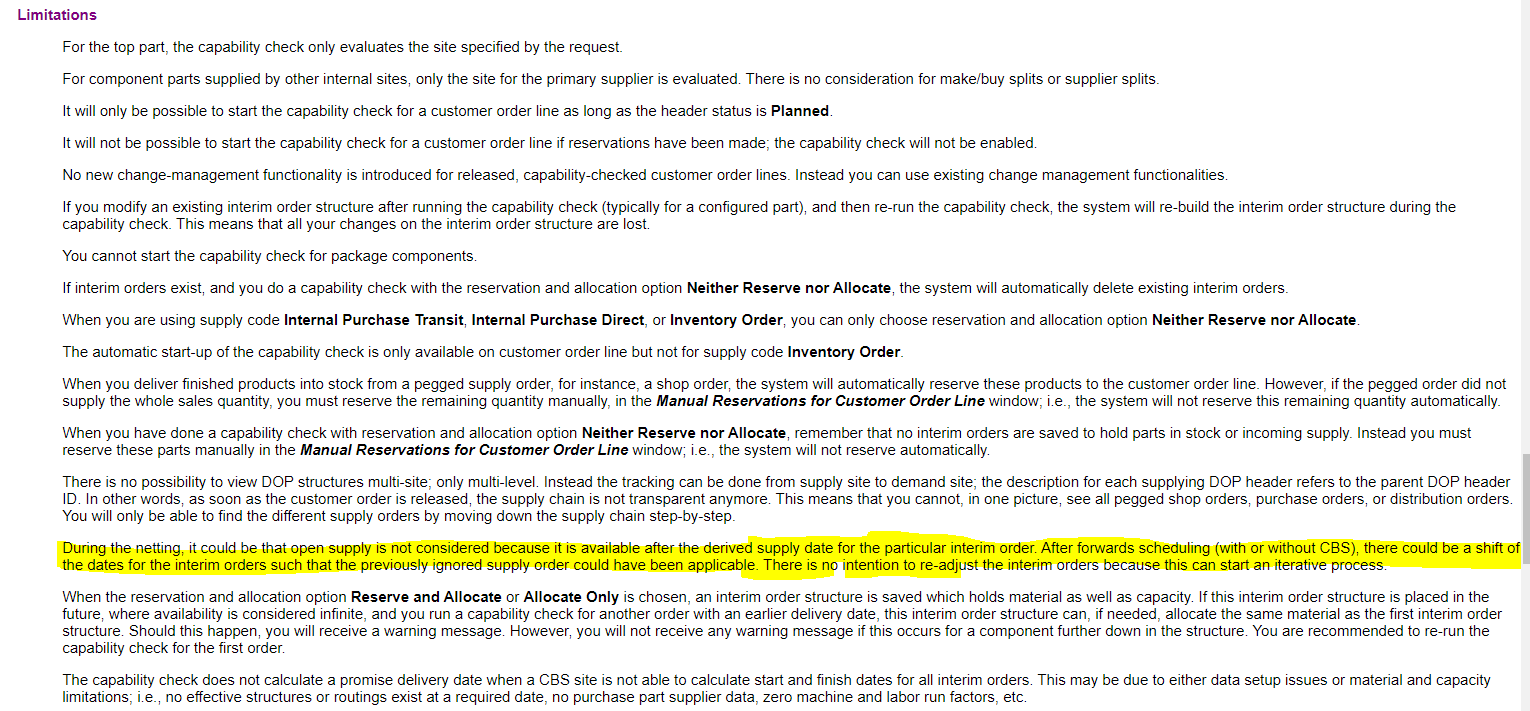We are currently working on some solutions to improve our dates for our customers. One gap we currently have within IFS is that ATP (Available to Promise) and CTP (Capability check or Capable to Promise) do not include open supply, unless the Wanted Date is within the Open Supply window.
Example where Supply is not seen:
- Customer Order Wanted Delivery Date - 5/10/21
- Shop Order Due Date 5/12
- ATP runs and shows you can only fulfill so much of the order (based on qty on hand and selling qty). Thus the user runs CTP moves the promise date on the customer order to the full part lead time (30 days) even though the supply is coming in on the 12th.
Example where Supply is seen:
- Customer Order Wanted Delivery Date - 5/10/21
- Shop Order Due Date 5/8
- ATP or CTP see the supply and the date properly plans the customer order.
With the supply not being seen on the first one example, we get an extended lead time that is no necessary. Do any other customers run into this issue? If so, have you come up with any solutions?
Best answer by Vimukthi Mahakumbura
View original







